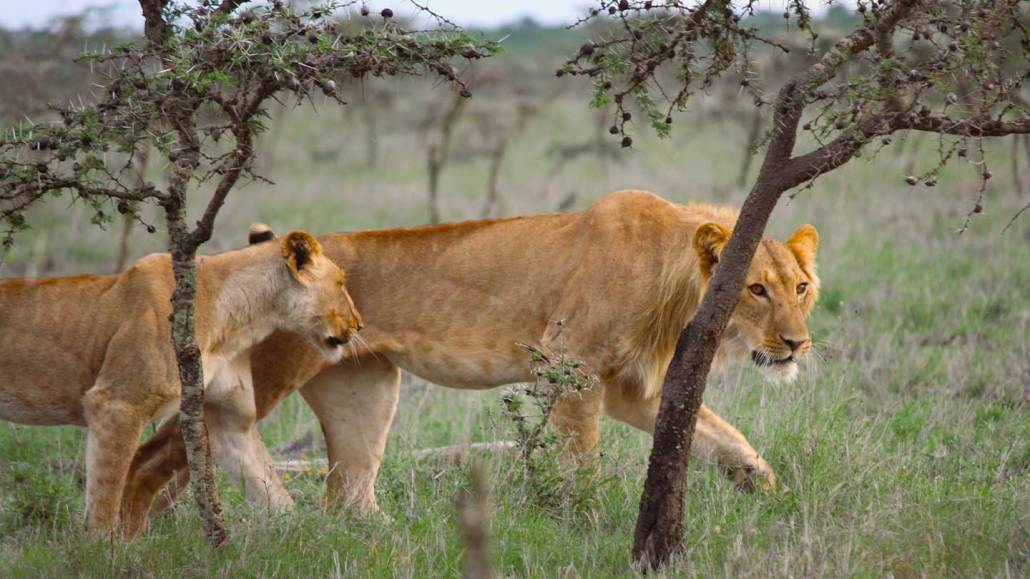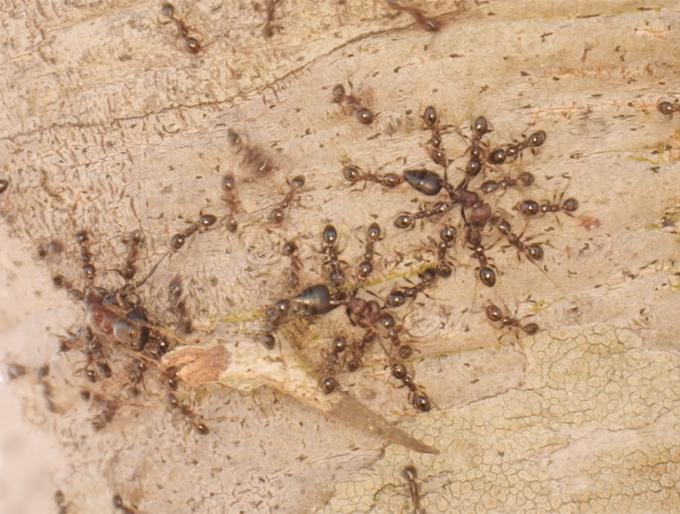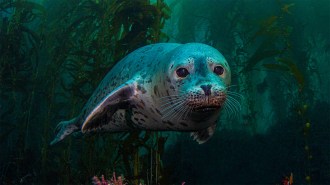How an invasive ant changed a lion’s dinner menu
The impact rippled up from ants to trees to elephants to lions and their prey

When there’s not enough tree cover, lions in the Ol Pejeta Conservancy in Kenya switch from their favorite food — zebra — to buffalo. What’s taking down the trees? Invasive ants, which are messing up the ant-tree mutualism that protects trees from elephants.
Victoria Zero
How did the ant steal the lion’s dinner? This isn’t the beginning of one of Aesop’s Fables. It’s the finding of a new study showing how the disruption of one tiny mutual relationship on the African savanna has big impacts on the food web — all the way to the lion’s den.
When big-headed ants (Pheidole megacephala) invade the savanna, they kill off native acacia ants (genus Crematogaster), robbing local whistling thorn trees of their valiant defenders against hungry elephants. Without ants to bite them, the elephants rip up the thorn trees, opening up the grassland, which makes it harder for lions to catch their preferred zebra meals. Lions end up hunting buffalo instead. The findings, published online January 25 in Science, show that invasive species’ effects can be very indirect — and suggest that changes in different low-level mutualisms might also echo up food webs in other ecosystems.
Over the past 15 years or so, wildlife ecologist Jake Goheen and his colleagues at the University of Wyoming in Laramie and the Ol Pejeta Conservancy in Laikipia, Kenya, have been studying how acacia ants protect whistling thorn trees (SN: 6/15/10). When an elephant tries to eat the tree, “ants swarm up inside its nostrils and bite from the inside out,” Goheen says.
The scientists were also examining what the lions in the conservancy eat as part of a separate study. “One of the things that we found … was that lions are much more effective, they’re more successful with their hunts in areas where tree cover is high,” Goheen says.
But what happens when tree cover is suddenly low? To find out, Goheen and his colleagues collared six lionesses from the local prides to track their activity and kills. The team also set up experimental plots where big-headed ants had invaded, and where the native ants still held sway.
The big-headed ant arrived in the conservancy between 2002 and 2005, Goheen says. “We think it probably was imported on produce,” brought into the houses or tourist camps in the area. The invading insects kill local acacia ants wherever they find them. And other studies have shown that without defending ants, pachyderms tore down the thorn trees five to seven times more often.

In the new study, the scientists could have used drones or satellite images to study tree cover, but “we don’t have that kind of money,” Goheen says. Instead, the researchers tracked their collared lions, and then got down on hands and knees near the lions’ recent kills, using a range finder to measure the openness of the area. Areas with big-headed ants, the team showed, had 2.67 times higher visibility than areas without — meaning that lions could see farther, but so could their prey.
Lions relied on the cover of trees to pounce on hapless zebras nearby: Where visibility was low, the probability of a zebra kill was 62 percent. But when visibility was high, the lion’s chance of taking down a zebra dropped to only 22 percent.
Over the three years of the study, zebra dinners decreased from 67 percent to 42 percent of lion kills. But the lions didn’t go hungry. Instead, they went for beef. Buffalo kills increased from zero to 42 percent of kills over the study period. It’s a risky diet, Goheen says. Buffalo “are big and feisty,” and lions hunting buffalo are more likely to be injured.
The study shows that “the disruption of a mutualism can have cascading effects on other species in the community,” says Emilio Bruna, a plant ecologist at the University of Florida in Gainesville. “Those effects can be unexpected and indirect.”
It’s a clue, Bruna says, that ecologists should be looking out for other pairs like the acacia ant and the thorn tree, where a single special relationship is a foundation for an ecosystem and a single anthill could cause a savanna-wide shift in who is eating who.






